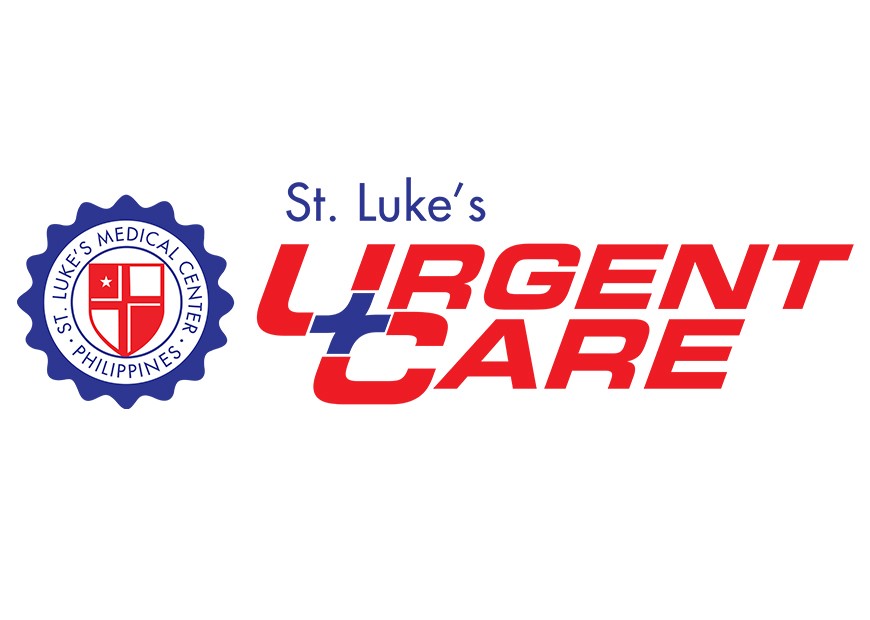About Time for Urgent Care
There are times when we feel the immediate need to see a doctor but are taken aback by the absence of an appointment or dissuaded by the prospect of an overloaded Emergency Room that deals with patients with ‘life-and-death’ cases. How we wish there are semi-emergency rooms or “doc-in-a-box’ outfits where we can run to for our primary medical needs.
We need not dream anymore as St. Luke’s Medical Center has opened the first Urgent Care Clinic in the country late last year in its Global City location and, more recently, in the Mall of Asia’s Five E-Com Center in Pasay City.
Urgent Care is established with the value proposition that you do not need an appointment to compete for attention with others with more serious cases. It is also founded on the principle that the costs are more reasonable and transparent than your usual doctor’s office, emergency room, or hospital. Best of all, it is designed to treat majority of your acute medical conditions and have you in and out of the clinic in under an hour.
By definition, Urgent Care is a category of walk-in clinic focused on the delivery of ambulatory care in a dedicated medical facility outside of a traditional emergency room. It primarily treats injuries or illnesses requiring immediate care, but not serious enough to require an ER visit. It is distinguished from similar ambulatory healthcare centers such as emergency departments by their scope of conditions treated and available facilities on-site.
Urgent Care Clinics started in the US during the 1970s and have since grown tremendously to 10,000 facilities today. Data from its US operations are likewise impressive, showing that 57% of patients wait 15 minutes or less to be seen, and about 80% of all visits are accomplished in 60 minutes or less. Moreover, it is estimated that 35% of emergency room visits in the US could have been resolved faster and more affordable with an urgent care center.
With the growing problems of an overcrowded ER, primary care clinician shortages and rising health care costs, Urgent Care have emerged as a truly more viable setting. It is both an alternative and a solution to patients’ clamor for improved access to health care and adequate and prompt attention to common walk-in situations like illnesses and injuries that are not necessarily at the level of an emergency.
St. Luke’s Urgent Care provides all of these services on a 24/7, 365 days a year basis. It treats conditions seen in primary care practices including nausea, dizziness, flu symptoms, ear infections, strep throat, as well some minor injuries such as lacerations and simple fractures. It is also targeted to cater to workplace-related illnesses or injuries and provide services for corporate clients like medical exams and drug testing.
Patients need to know that Urgent Care Clinics are not equipped to deal with trauma, provide resuscitation or serve patients whose conditions need hospital admission that are all ER-related care. Yet, like an ER, Urgent Care Clinics accept walk-in patients during business hours, treat a broad spectrum of illnesses and injuries, perform minor medical procedures, are open seven days a week and 24 hours a day, have on-site diagnostic equipment including phlebotomy and x-ray, contain multiple exam rooms, abide by various ethical and medical business standards and, most importantly, are staffed by physicians, nurses, therapists and employees with backgrounds in primary and emergency care working under physician supervision.
Historically, urgent care clinics abroad were established by independently- owned organizations with stand-alone facilities. Over time, the landscape has changed considerably with large hospital chains coming in and embracing the set-up. As hospitals become players in this important segment, so have Health Maintenance Organizations and Insurers begun recognizing this type of care as they partner with Urgent Care Clinics not only as a way of expanding their services to their clients but more so as a way to control spending growth by shifting some care from emergency departments to lower-cost Urgent Care.
Analysts see Urgent Care Clinics not only staying afloat but thriving in the future as patients, corporate clients and HMO see more of the value they provide, the cost-efficiency that they entail and the accessible healthcare that they render. For more information, please call the St. Luke’s Medical Center Urgent Care at tel. nos. 789-7700 ext. 1073 (Global City)





